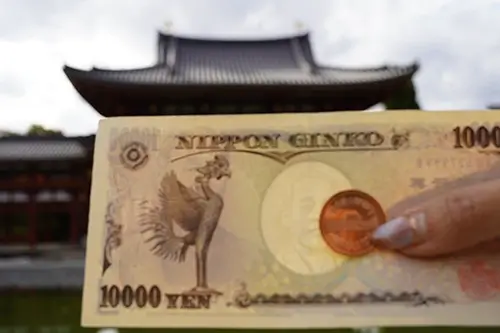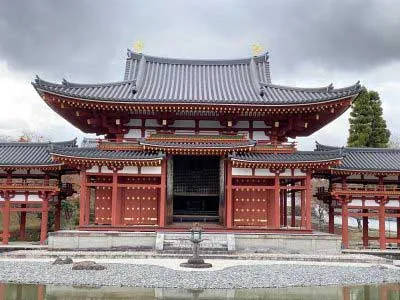The Byodoin temple is the most famous landmark in a part of Kyoto that is especially known for its tea, Uji. The image of the temple is very well-known throughout Japan because it is the image depicted on the back of a 10-yen coin. The vista of this temple is also especially beautiful on a wind-free day because of the lake surrounding it, with its reflection in the water. Let’s learn a bit more about this historical landmark!


History of the Byodoin
The temple was originally built in 998 as a countryside villa of lord Fujiwara no Michinaga. He was one of the most powerful members of the Fujiwara clan. In 1052, it was changed into a Buddhist temple by another Fujiwara clan member.
The most important structure of the temple is the Hall of the Phoenix. It was built in 1053 and is the only original structure still left standing since the rest of the structures were destroyed. This happened in a fire caused by the civil war that was raging in 1336.
Structure of the Phoenix Hall
A statue of an Amida Buddha made of Japanese cypress wood and covered in gold. A series of 52 bodhisattvas made of wood. And a series of 14 paintings raigō made on the temple doors and other objects. These are all considered National Treasures that you can find in the Phoenix Hall. In 1994, UNESCO named the temple as a World Heritage Site within the historical monuments of ancient Kyoto.
A Personal Impression
Byodoin Temple was smaller than I expected, but the atmosphere around the Phoenix Hall was very calm and elegant. Seeing it reflected on the surface of the pond made it feel almost like a painting.
I had seen it on the 10-yen coin many times, but being there in person gave it more meaning. The museum next to the temple was also well designed and helped me understand the details of the architecture and statues.
Recommended Tours
・The Best of Japan Private Tour Package 7 Days
・The Best of Japan Private Tour Package 9 Days
・The Best of Japan Pop Culture Tour Package 10 Days
Your Japan Tour
As seasoned Japan experts, we create perfect Japan package tours including destinations like Kyoto. Check out our group tours and private tours, or contact us to start planning your unforgettable holiday to this fascinating country full of once-in-a-lifetime experiences, culture, history, nature, and delicious food!
Access Information
Access: From Uji (JR Line / Keihan Line) station
Entrance fee: Adults 600 yen, senior and junior high school students 400 yen, elementary students 300 yen
Hours: From 8.30 am to 5.30 pm (last entry 5.15 pm)